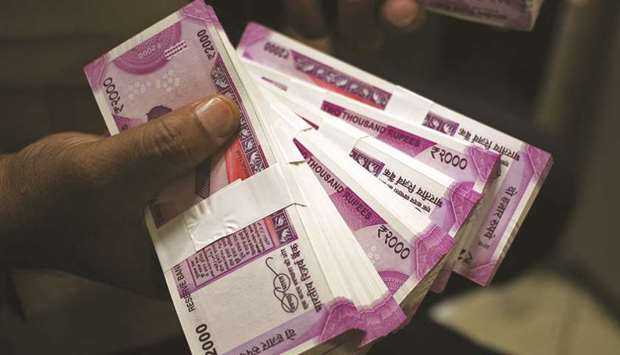
The rupee fell sharply yesterday against the US dollar, ending at 71.71 as compared to Monday’s close of 71.43
The S&P BSE Sensex fell 0.2% to close at 37,328.01 points in Mumbai, after dropping as much as 0.5% and rising as much as 0.3%. The NSE Nifty 50 Index eased 0.3%.
Most regional markets advanced after the US delayed restrictions imposed on business with China’s Huawei Technologies Co for another 90 days. Meanwhile, a little more than half of India’s top 100 companies missed earnings estimates in the June quarter, according to Citigroup Inc
“Earnings will be weak for another quarter and more in the absence of government stimulus,” said Chokkalingam G, managing director at Mumbai-based Equinomics Research & Advisory.
Fourteen of 19 sector sub-indexes compiled by BSE Ltd declined, led by a gauge of metal companies Reliance Industries contributed the most to the index retreat, decreasing 1.28%; Yes Bank had the largest drop, falling 7.1%.
Infosys provided the biggest boost to the index, advancing 1.9% while Maruti Suzuki had the biggest gain, rising 3.5%.
The Sensex is about 7.4% below its 52-week high on June 4.
Meanwhile the rupee fell sharply yesterday against the US dollar, ending at over 6-month low against US dollar. The rupee opened yesterday at 71.51 a dollar before sliding to 71.80 at day’s low.
The rupee closed at 71.71 as compared to Monday’s close of 71.43. Outflows from weak domestic stock markets and a rise in global crude prices weighed on the rupee.
“In the last 26 days, the rupee has fallen by 5.15%, mainly due to hefty selling from FIIs (foreign institutional investors) who withdrew nearly Rs24,000 crore during the same period from Indian markets,” said Shrikant Chouhan, head of technical research at Kotak Securities.
Global oil prices have rebounded to $60 a barrel on expectations of more stimulus measures in China and Germany. After a tumultuous first half of August when investors dumped equities and poured their money into government debt and other safe havens, some calm has returned to markets this week. Higher crude oil prices put pressure on India’s trade deficit and thus the rupee.
India’s trade deficit narrowed to $13.4bn in July, much lower than monthly run rate of about $15bn over the past three months, largely led by lower oil and gold imports. But Edelweiss analysts expect trade deficit to rise in subsequent months. “Exports outlook remains clouded amid ongoing global trade tensions and the weak global economy. Trade deficit could rise towards the $14-15bn range as gold and oil imports normalise,” the analysts said in a note.
Rupee traders would be looking ahead to US Federal Reserve’s Jackson Hole seminar for clues to future interest rates and this weekend’s G7 summit. The Fed’s minutes from its July policy meeting are also due this week. Traders mostly expect a 25 basis-point interest rate cut by the Fed in September. Lower US interest rates put pressure on the dollar and bond yields.
The broad rise of the US dollar also weighed on the rupee. The dollar index, which measures the greenback against a basket of six currencies, hit a more than three-week high yesterday, boosted by slightly higher Treasury yields.
